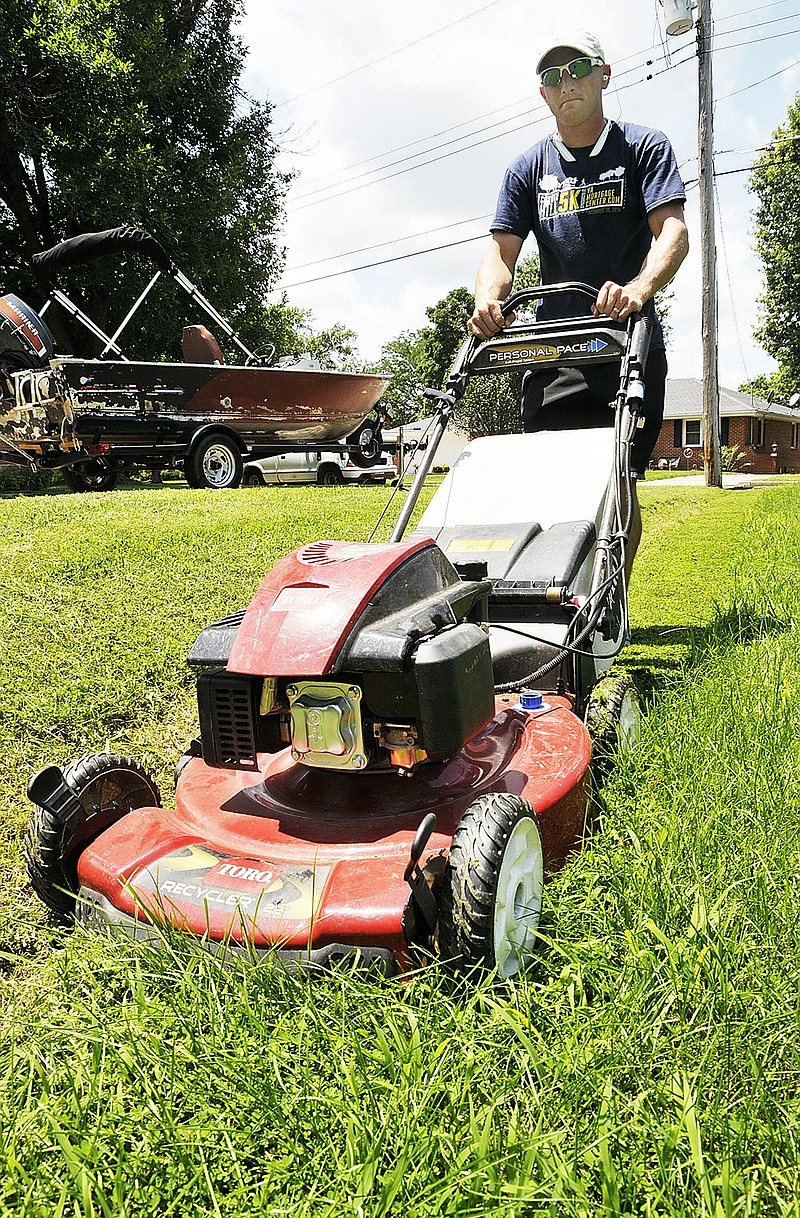Rain and temperatures are making it "party time" for the fungus that causes brown patch.
"It's like lowering the disco ball over your lawn," said Lee Miller, plant pathologist for University of Missouri Extension. "The temperatures are perfect and there's more than enough free moisture for brown patch to infect turfgrass."
Brown patch is the Achilles' heel of tall fescue, Miller says. Homeowners should watch for the disease in vulnerable areas like shaded spots. He says lack of morning sun and decreased airflow can encourage brown patch to flourish.
Unfortunately, the types of fungicides that homeowners can buy at retail stores to treat brown patch aren't that effective, Miller said.
"There was a study out of Oklahoma State University that showed that several of the over-the-counter fungicides really don't have a great impact on brown patch," he said. "Particularly when you've already found the disease. A lawn care operator will have access to more effective options such as fungicides with the active ingredient azoxystrobin."
Miller warned that if you don't plan on having a fungicide sprayed by a certified lawn applicator, it may be better to save your money and wait for fall.
"Rather than applying an over-the-counter fungicide, think about waiting until September and reseeding the infected areas," he said. "That's probably where you're going to get the most bang for your buck."
If you decide to reseed, Miller suggests you choose a tall fescue cultivar that is a bit more resistant to brown patch.
"Rembrandt, Picasso or Winning Colors are all good choices," he said. "There are some other ones out now that are labeled RTF, or rhizomatous tall fescue. We have planted several of these at our research farm with very good success."
Certain lawn care practices can encourage brown patch. At the top of the "do not" list is adding fertilizer in late spring or during the summer.
"Nitrogen fertilizer causes excess shoot growth and predisposes the plant to brown patch infection," Miller said. "It's akin to eating a large meal before running a race. It just doesn't work."
For tall fescue, you should not apply fertilizer in May, June, July or August, he said. This will let tall fescue go into the summer lean and mean.
"You should focus most of your fertility efforts in September and October, and you can put on a full pound of nitrogen per thousand square feet in those months," Miller said.
You're probably not watering your lawn these days with all the rain, but when Missouri's dry weather arrives, proper watering can make a big difference.
"You need to water your lawn in the early morning," Miller says. "Dew forms on the grass overnight, so if you water at 6 or 7 a.m., you'll rinse off that dew and break up the infection process."
A dull mower blade can butcher the grass leaves and make the turf more susceptible to disease, especially brown patch. A sharp mower blade can help slow brown patch infection.
"When your mower blade is dull, you don't get a straight cut on the leaf. You get ragged edges," Miller said. "That ragged cut actually has more surface area for the pathogen to get into the leaf blade."
If you're not certain that you have a brown patch infection in your lawn, Miller says your local MU Extension office can help you diagnose the problem.
The MU Extension publication "Managing Lawns and Turf Grass" (MG10) is available for free download at extension.missouri.edu/p/MG10.

